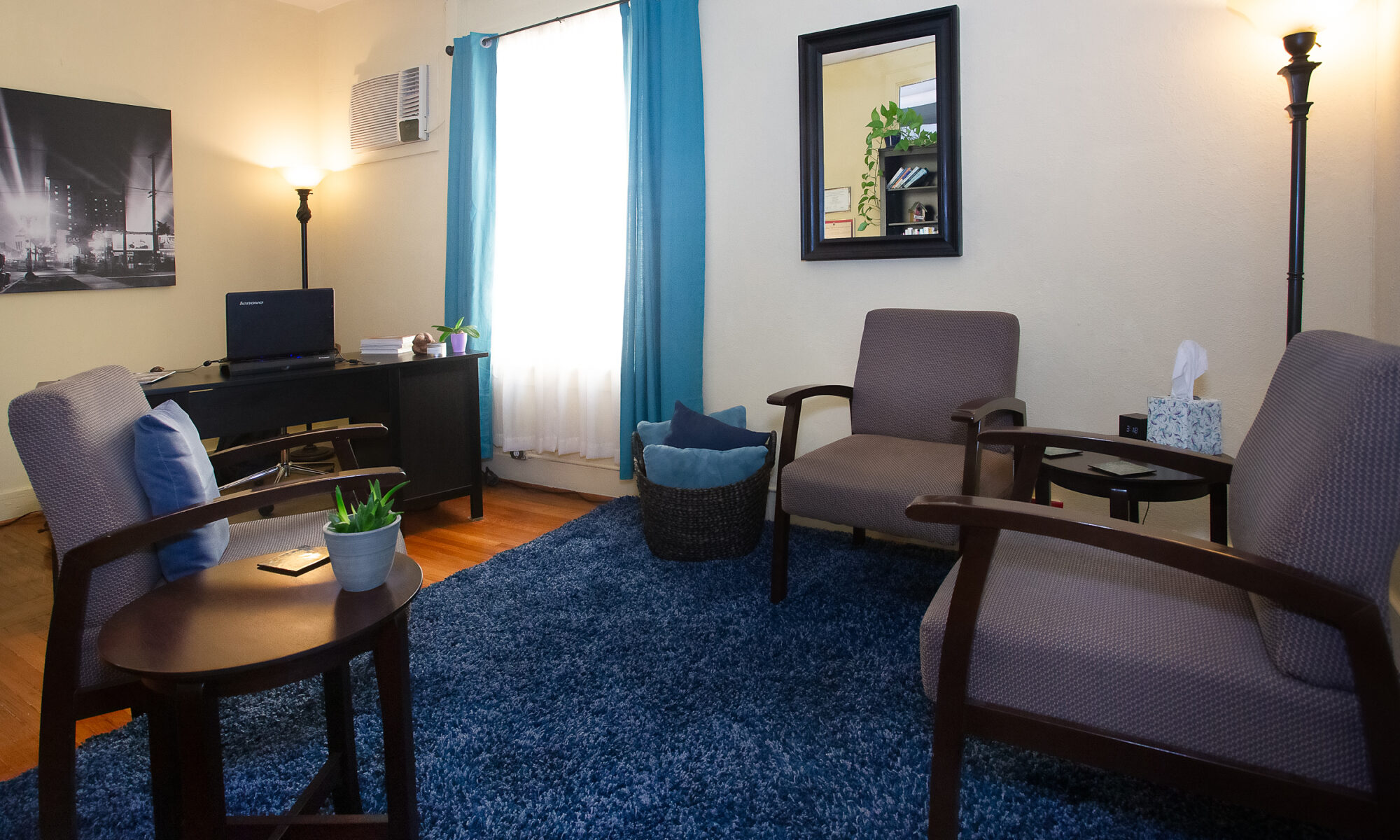
This article is an overview of what I have noticed works and does not work in relationships. It is not meant to be an exhaustive review, but instead a summary of what I see are the most important things to pay attentions to if you want to have a healthy, connected relationship.
I feel that, as a couples therapist, my training and education never end. This is because so much theory behind couples therapy is influenced by current science of the human brain in relationship. This is good news! But it also reminds me that the choices I help couples make during conflict sometimes go against their natural responses.
Bonding with others is hard-wired into our brain and evolved from our need to be inter-dependent in order to survive and propagate. Therefore, much of what we do with our partners feels natural and easy–this is not what couples come to therapy for help with. The part that does not feel natural and easy usually centers around conflict, or difficult conversations, that every couple runs into in the course of being together.
What I have learned from the experts is that couples need to attend to not only how to have healthy conflict that results in understanding and connection, but also how to keep doing the things that are easy and natural. Attending to the latter makes it easier to attend to the former.
So let’s look at a round-up of the best tips I have learned from the experts in couples therapy, and why you need to know them if you want to be successful in relationship.
For this article, I pull from the following experts in couples therapy. I encourage you to subscribe to their newsletters if available as a way to get regular reminders of what works:
- THE GOTTMAN INSTITUTE: Drs. John and Julie Gottman
- THE COUPLES INSTITUTE: Ellyn Bader and Pete Pearson
- INTER-ANALYTIC COUPLES THERAPY: Dr. Walter Brackelmanns
- THE PACT INSTITUTE: Dr. Stan Tatkin
- RELATIONAL LIFE INSTITUTE: Terry Real
THE BREAKUP PREDICTORS: Couples will regularly act as though their relationship path is out of their control, asking, “”How did we get here?” The truth is that they got there together, by making conscious and non-conscious choices, but they may not have had their eyes open while driving, so to speak. Terry Real says that his first step with couples is to find out “Who’s doing what?” I use this question with my couples as a way to bring awareness to each individual’s contribution to the couple dynamic. If you don’t know what you are doing, how can you change it?
So what is most important to look out for? According to the Gottmans, who have 40 years of research on couples to draw from, contempt is the number-one predictor of divorce when it shows up between couples. What is contempt? In The Marriage Clinic, contempt is defined as: “Any statement or nonverbal behavior that puts oneself on a higher plane than one’s partner.”
Contempt is looking down at your partner, judging them as less than, specifically less than you. It can show up as disgust, disrespect, disregard, insults, eye-rolling, and ignoring, just to list a few. John Gottman calls it “psychological abuse” and that is exactly what it feels like. It makes the other feel as though there is something wrong with them, that they are not on the same plane as you–not as smart, not as young, not as attractive, not from as good a family, etc.
Contempt is so damaging because it is difficult if not impossible to repair, unlike other forms of conflict or differences. Contempt sticks and is hard to forget or excuse. There is a big difference between someone saying: “Since you have gained weight I find it harder to become sexually aroused with you”, and “You’re so fat you disgust me and I don’t even want to touch you half the time”. The first one hurts, but can lead to a deeper conversation, while the second one damages trust, safety, and connection, pretty much ensuring that a deeper conversation will not happen.
***
Another main predictor of breakup or divorce? Again, the Gottmans have a corner on this, sharing that the stories we have of one another are critical in shaping our responses in conflict. And negative stories of our partners over time lead to less successful conflict, less trust and connection, and often the end of the relationship. In The Marriage Clinic John Gottman calls these negative stories negative sentiment override, meaning the [negative] “affect around which the problems do not get solved”.
In layman’s terms, if you begin most difficult conversations not giving your partner the benefit of the doubt, you are likely to have gridlock, or higher levels of aggression. If you think about it, when you head into conversations with your partner with suspicion or negativity, your relationship will feel like you are living with a threat that is always trying to sabotage your well-being!
When this happens, I often look for experiences in one’s history that have negatively colored how they experience others in the world. Individual therapy can greatly help to deconstruct and dismantle some of these responses and make the person more adaptive to what is really going on with their partner.
WHAT DOES NOT WORK: Nearly all couples enter into couples therapy telling me that the biggest problem is their “communication”, but that is usually not the actual issue. Couples are communicating just fine, all the time, even when that communication is via the “silent treatment”. What the issue usually is is their difficulty in having difficult conversations. Conflict can fall into this category, to be sure, but other difficult conversations could involve changing values, problem-solving, or expressing needs.
The truth is that difficult conversations may remain difficult, but that does not mean they can’t be successful. What is success in a difficult conversation? Understanding and Connection. This is because the root of the difficulty in these talks stems from one person’s vulnerabilities being hurt. A successful difficult conversation is when one person expresses that hurt in a way that is not critical of the other, and the other then responds in a caring and empathic manner, avoiding problem-solving.
Since this is easier said than done, here are a couple of tips from the experts on what to avoid in these conversations and what to do to make them easier:
The Four Taboos: Dr. Walter Brackelmanns developed the idea of the Four Taboos during his many years working with couples, and he incorporated them into his own modality, Inter-Analytic Couples Therapy, which is what I practice. These actions became taboo primarily because they will completely derail a conversation two people are having about feelings, and they will also turn healthy conflict into a fight.
The Four Taboos are:
- Criticism
- Defensiveness
- Demands
- Dysregulation, either up or down
The reason he identified these as dangerous is because when they are used, they result in disconnection, not connection. They are protective or aggressive responses to the others upset. In a nutshell, they don’t work!
Criticism is when one makes judgements or interpretations about the other rather than talking about how they feel (“I feel you are a jerk” is not a feeling, it is a criticism.). Defensiveness is difficult to avoid, because that is a natural brain response to feeling attacked, but it does not work because it is a justification for the triggering behavior. Demands are when you tell the other what to do or not do rather than making a request. And dysregulation happens when our rational brain gets shut down and we are running on emotions that respond to a real or perceived threat by either ramping up to attack, or shutting down to protect.
Avoiding the four taboos during conflict requires making conscious choices in the moment, as well as having a commitment to building trust and safety in the relationship during non-conflict times. Additionally, one must be able to regulate oneself, and/or be co-regulated by the other, so that they have access to conscious choice. Regulation does not mean that you are perfectly calm, it just means that you can have your feelings and still talk about them–that your right and left brain are both still online. (In dysregulation, our left brains go offline!)
These four taboos may remind you of the Gottman’s Four Horsemen of the Apocalypse, and that is because they are very similar. However, the similarities between them does not invalidate either, rather it reinforces the notion that in order to connect during conflict, you better avoid dis-connective actions.
Turning Against Bids: John Gottman has identified three possible responses to what he calls “bids”, which are simply attempts to connect with another. Bids can be direct or indirect, they can be a question or a comment, they can be verbal or non-verbal, but in all cases the health of a relationship can be measured by the most common response of the other.
For this article, I am highlighting turning against, because this is the most damaging of the responses and clearly belongs in the “What Does Not Work” category. Turning against a partner’s bid is not a passive act–it is often hostile or aggressive.
(To read a brief article about all three responses to bids, click HERE.)
It is usually not the intent of the responder to come across this way–perhaps this is how they learned to be in their family of origin or from previous relationships. Nevertheless, as described in The Relationship Cure by Gottman and DeClaire, it is received as contemptuous and critical, setting a pattern of rejection and hurt feelings and ultimately, disconnection. A relationship has little chance of succeeding if this is the go-to response to bids, so I recommend avoiding it!
It is important to note that turning against happens even in healthy, stable relationships. We all have bad days, lose our patience, get frustrated, and feel interrupted at times. That is when it is vital that we stay regulated so that we can express what is going on with us rather than punish our partner. If you say to your partner, “I just can’t think about that right now because my brain is fried, can we talk about it in the morning?”, you are assured a more compassionate reaction than if you turn against their bid for connection.
WHAT WORKS BEST: So what does work, according to the experts? Happily, there are many things we can do that require minimum effort and deliver big rewards. This is because our needs in relationship are relatively simple. Everybody wants to feel respected, loved, important, and desired. Though there are deeper needs that can be met, I have found that attending to these four sets a couple up for smoother sailing.
Below I have listed just a few of the most effective actions that partners can do for one another, but they all have a similar positive affect on relationships in that they reinforce positive stories about the other–they lead us to give one another the benefit of the doubt rather than jumping to a negative conclusion.
Having Shared Dreams/Celebrating Each Other’s Wins: Why be in a relationship? The reasons for committing to another person have changed somewhat over the years. During hunter-gatherer times, relationships offered safety and security, as well as companionship and someone who could help with work and children. We are “hard-wired” to gather with others since that is how we have stayed alive, being ill-equipped to survive on our own.
Things have changed, and I notice that in Los Angeles it can feel safer to be alone and away from others than in the middle of a group. If a person could do fine interacting with others only online and living alone, why bother with the messiness of living with someone who is not you?
Many of the experts, including the Gottmans and Stan Tatkin, talk about the necessity of having shared dreams, meaning, or purpose. If a couple is going to take on the challenging work of navigating differences and building a life together, then they are best served agreeing on what that life will look like. That is the shared dream–and it can serve as the motivation to do the difficult parts of relationship maintenance.
(Click HERE to access the Gottman’s Shared Meaning Questionnaire.)
Without a shared dream, purpose, meaning, or vision, a couple is essentially two individuals moving in different directions. This can undercut any efforts to join them or create a “team” mentality from which to solve problems, because they are both operating from individual agendas.
Shared dreams are critical to relationships much as they are to businesses–you can’t imagine a business where each employee has a different goal or path to success–this is why so many successful businesses have Mission Statements. They are written declarations of where they want to go.
Relationships will also benefit by agreeing on where they want to go.
Turning Toward Bids: One of my favorite Gottman concepts is the idea that we are always making or responding to bids in relationships. Bids made in relationships are specifically invitations to connect, and they can be verbal or non-verbal, direct or inferred, specific or general.
A bid can be anything from a comment about the weather to a specific question or request. In all cases they are attempts to connect with the other in some way. Connection is important to human beings because it reminds us that we are not alone, that we are safe, that we are important and have value. It also feels good!
I wrote earlier about how turning against creates disconnection and ultimately resentment, so you can think of turning towards as the opposite of that. But what does it look like? In simplest terms, the act of turning towards is any response that is shows that you are paying attention to the other. That could be a nod, a grunt, a question, an acknowledgement, or any number of responses at our disposal. This simple act can have a powerful positive affect on your partner and your relationship, and create a “cushion” for the more challenging and difficult interactions.
I have included turning towards in this article because I am a big fan of using skills that prevent disconnection while making conflict more productive.
(Click HERE for a short article detailing the different ways we can turn towards.)
The Dialogue of Intimacy: I have left this skill for last, mostly because it it the tool I use with couples in the therapy room and the tool I give them to take home and practice. It is also the tool that I have found creates the most change for the least amount of effort, if done consistently and with intention.
As I was taught, a Dialogue of Intimacy is a conversation that connects two people through empathy. Everything else is a dialogue of distance! It works because it moves beyond the surface issue of a conflict to reveal the underlying feelings of hurt, sadness, rejection, betrayal, and more. Unless these feelings are expressed, the Listener will likely miss the target with their response, aiming instead for the problem rather than the effects of the problem.
There are two roles in a Dialogue of Intimacy: a Talker and a Listener. The Talker is the one initiating the dialogue, bringing up something they are bothered by. Ideally, the Talker uses the formula “an emotion tied to a person and an event” to express what is bothering them, avoiding criticism in the process. The Talker should learn how speak about what is going on in their inner world from a subjective perspective–feeling the feelings and not just talking about them. Vulnerability is essential for the Talker in this task–because vulnerability is what draws in the listener.
The Listener has the harder job of the two, because they have to “set aside” what they may be feeling at the moment. The Listener is in charge of the process, leading the Talker down the road into their inner world, asking questions that illuminate why this issue was so triggering to the Talker. Without this information the Listener has to guess at what is going on, increasing the chances that their response will not work.
The Listener uses open-ended questions based on what their curiosity wants them to know more about. I always encourage listeners to look in the eyes of the Talker–this is where your questions will come from!
There is but one reason to have a Dialogue of Intimacy–to gain greater understanding. You are not trying to solve the problem here–understanding must precede problem-solving! This understanding comes from empathy–the experience of feeling and seeing the others’ perspective, which then leads to connection. This is why conflict, when done well, is not something to be avoided.
A couple of tips: both partners must be able to self-regulate and co-regulate or else the process will go off the rails; and you must stay in the role you have chosen until a full understanding is achieved. The good news is that this understanding often take much less time than most couples conversations–you just have to know where you are headed and how to get there!
(For therapists who want to study the Dialogue of Intimacy in a formal setting, click HERE for information on the trainings.)
WHAT TO DO WITH ALL THIS INFORMATION: In this article I have shared just a snippet of offerings from the experts in couples therapy, with the hope that you will seek out more information yourself. The benefits of learning new skills are boundless, and those benefits improve the one thing that most of us value more than anything else–our relationships with loved ones.
The goal of learning these skills, and the goal of the experts who do this work, is not to create problem-free or conflict-free relationships because there is no such thing! Rather, the goal is to make difficult conversations easier by having couples connect during conflict instead of protect against one another.
Conflict and difficult conversations are inevitable due to the simple fact that we are different from one another. Learning how to talk about these differences is a powerful step toward greater closeness. Who couldn’t use a bit more of that these days?



